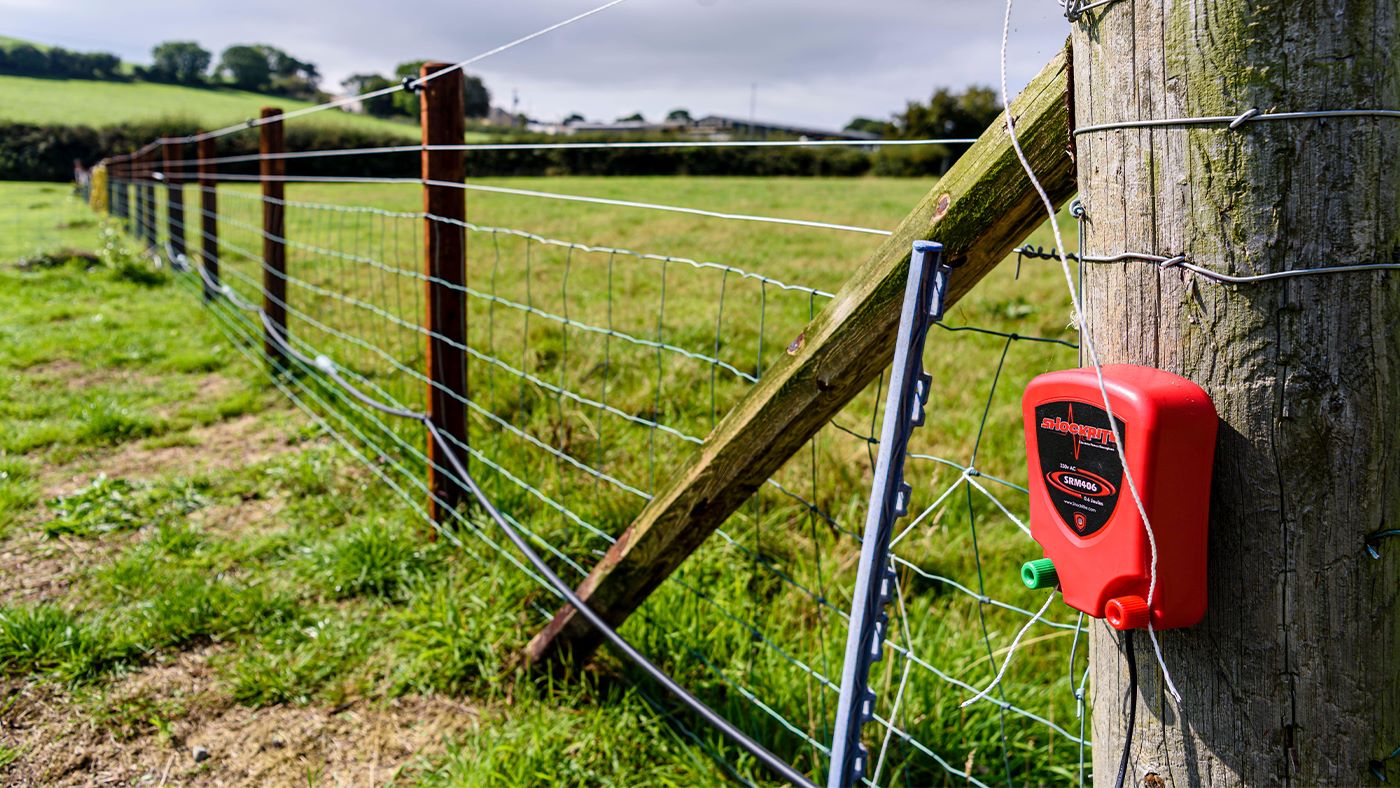

Articles
How Does Electric Fence Work
Modified: October 22, 2024
Discover how electric fences work and keep your property protected with this informative article. Learn about the benefits and installation process of electric fences.
(Many of the links in this article redirect to a specific reviewed product. Your purchase of these products through affiliate links helps to generate commission for Storables.com, at no extra cost. Learn more)
Introduction
Electric fences are a popular choice for securing and containing livestock, pets, and even wildlife. They provide a safe and effective means of creating a boundary without the need for traditional physical barriers like walls or fences. So, how does an electric fence work? In this article, we will explore the components of an electric fence, the science behind its operation, and the benefits and limitations of using electric fences.
An electric fence consists of several key components that work together to create a deterrent barrier. The main components include the power source, the energizer, the fence wire, and the grounding system. Each of these elements plays a crucial role in the functionality of the electric fence.
The power source is what supplies the electric current to the fence. This can be a battery, a solar panel, or a connection to the mains electricity. The energizer is responsible for converting the power from the source into short pulses of high voltage electricity. These pulses are delivered to the fence wire.
The fence wire itself is made of a conductive material, such as galvanized steel or aluminum. This wire is strung along the perimeter of the area that needs to be fenced off. When installed properly, the wire should be tensioned and insulated to prevent any accidental grounding or damage.
The grounding system is a crucial component that completes the electrical circuit. It consists of several metal rods or plates that are driven into the ground and connected to the energizer. This allows for the safe dissipation of excess electrical charge and helps to maintain the effectiveness of the fence.
Now that we have examined the components of an electric fence, let’s delve into how these components work together to create an effective deterrent. The principle behind an electric fence is based on the fact that animals, including humans, are conductive. When an animal comes into contact with the electric fence, it completes the circuit by connecting the wire and the ground. This results in a brief but uncomfortable electric shock being delivered to the animal.
Key Takeaways:
- Electric fences offer a cost-effective, versatile, and environmentally friendly solution for securing and containing animals, providing effective deterrence while minimizing visual obstruction and adapting to various terrains.
- Understanding the components and operation of electric fences is crucial for their successful installation, maintenance, and safe operation, ensuring effective containment and deterrence while addressing potential limitations and regulatory compliance.
Read more: How Does Invisible Fence Work
Components of an Electric Fence
An electric fence is composed of several key components that work together to create a functional and effective boundary. Understanding these components is essential for proper installation and maintenance of an electric fence.
1. The Power Source: The power source is the heart of the electric fence system. It provides the electrical energy needed to operate the fence. The power source can be a battery, a mains connection, or a solar panel. The choice of power source depends on the location and availability of power.
2. The Energizer: The energizer, also known as the fence charger or controller, is responsible for converting the low voltage from the power source into a high-voltage pulse. This pulse is sent along the fence wire to create an electric shock when an animal comes into contact with the fence.
3. The Fence Wire: The fence wire is the physical barrier that prevents animals from crossing the fence. It is made of a conductive material such as galvanized steel or aluminum. The wire is strung along the perimeter of the area that needs to be fenced off. It should be properly tensioned and insulated to ensure optimal performance.
4. The Grounding System: The grounding system is an essential component of an electric fence. It provides a path for the electric current to flow into the ground when an animal completes the circuit. The grounding system typically consists of grounding rods or plates that are buried in the ground and connected to the energizer.
5. The Insulators: Insulators are used to hold the fence wire in place and prevent it from coming into contact with other objects that could cause a short circuit. Insulators are made of non-conductive materials such as plastic or ceramic and are designed to withstand electrical and weather-related stress.
6. Warning Signs and Markings: To ensure safety and compliance with local regulations, electric fences should be clearly marked with warning signs. These signs indicate the presence of an electric fence and serve as a visual warning for people and animals approaching the area.
By understanding the different components of an electric fence and their functions, you can ensure that your electric fence is properly installed and maintained. It is crucial to follow manufacturer’s guidelines and consult with professionals to ensure the safety and effectiveness of your electric fence system.
The Power Source
The power source is a vital component of an electric fence system as it supplies the electrical energy needed to operate the fence. The power source can vary depending on the specific requirements of the fence and the availability of electricity in the area.
There are several options available for the power source of an electric fence:
- Battery: A battery-powered electric fence is a common choice, especially in areas where mains electricity is unavailable or unreliable. The battery provides a steady and consistent power supply to the energizer. It is essential to use a deep-cycle battery, specifically designed for electric fence systems, as they are capable of withstanding the frequent charging and discharging cycles.
- Mains Electricity: If mains electricity is accessible, it can be used as a power source for the electric fence system. A dedicated power outlet is required, and it is advisable to install a surge protector to protect the fence from power surges. Mains-powered fences are often used in permanent installations where a reliable power supply is available.
- Solar Panel: A solar-powered electric fence is an environmentally friendly and cost-effective option. It utilizes solar panels to convert sunlight into electrical energy, which is then stored in a battery that powers the fence. Solar-powered fences are especially suitable for remote areas where access to mains electricity is limited.
When selecting the power source for your electric fence, consider factors such as budget, location, and the specific requirements of your fencing project. It is essential to choose a power source that can provide a consistent and reliable energy supply to ensure the efficient operation of the fence.
It is important to note that the power source should be adequately protected from the elements and housed in a weatherproof enclosure. Proper protection is crucial to prevent damage from moisture, dust, or extreme weather conditions, which could lead to malfunctions or electrical hazards.
Regardless of the type of power source chosen, regular maintenance is necessary to ensure its longevity and proper functioning. This includes checking the battery levels, cleaning solar panels, and conducting routine inspections for any signs of wear or damage.
By selecting an appropriate power source and taking necessary precautions to protect and maintain it, you can ensure that your electric fence operates efficiently and effectively for years to come.
The Energizer
The energizer, also known as the fence charger or controller, is a crucial component of an electric fence system. It is responsible for converting the low voltage from the power source into short pulses of high-voltage electricity, which are then delivered to the fence wire.
The primary function of the energizer is to provide a powerful and intermittent electric shock to deter animals from crossing or breaching the fence. It acts as the “brains” of the electric fence system, regulating the electrical output and controlling the timing and frequency of the pulses. The energizer ensures that the electric shock is delivered in a safe and effective manner.
There are different types of energizers available, each with its own features and capabilities:
- AC Powered Energizers: AC-powered energizers are designed to be connected directly to a mains electricity supply. They provide a continuous and consistent power source to the fence. AC energizers are typically used in permanent installations where a reliable mains connection is available.
- Battery Powered Energizers: Battery-powered energizers are self-contained units that are powered by a rechargeable battery. They are versatile and can be used in remote locations where access to mains electricity is limited or non-existent. Battery-powered energizers provide portability and can be easily moved or relocated as needed.
- Solar Powered Energizers: Solar-powered energizers utilize solar panels to convert sunlight into electrical energy. The energy is then stored in a rechargeable battery, which powers the energizer. Solar-powered energizers are environmentally friendly and ideal for locations where there is ample sunlight. They provide a sustainable and cost-effective solution for powering electric fences.
The energizer is typically housed in a weatherproof and tamper-proof enclosure to protect it from the elements and unauthorized access. It should be installed in a location that allows for easy access for maintenance and inspection.
Some energizers come equipped with additional features and functionalities to enhance the performance and safety of the electric fence system. These features may include:
- Power Surge Protection: Power surge protection safeguards the energizer and the fence system from voltage spikes caused by lightning strikes or power surges in the electrical supply.
- Integrated Lightning Protection: Integrated lightning protection safeguards the entire fence system from potential damage caused by lightning strikes.
- Alarm Functionality: Some energizers include an alarm system that alerts you if there is a break in the fence wire or a malfunction in the system.
- Remote Monitoring: Advanced energizers may have the option for remote monitoring, allowing you to check the status of the electric fence system remotely through a smartphone app or online portal.
It is important to choose an energizer that is suitable for the size and type of electric fence you are installing. Factors to consider include the length of the fence, the type of animals to be contained or deterred, and the overall power requirements. Consulting with a professional or electric fence supplier can help ensure that you select the right energizer for your specific needs.
Regular maintenance and inspection of the energizer are essential to ensure its proper functioning. This includes checking the electrical connections, inspecting for any signs of wear or damage, and testing the output voltage regularly.
The energizer plays a crucial role in the effectiveness and safety of an electric fence system. Choosing the right energizer and properly maintaining it will provide reliable and consistent performance, ensuring the successful operation of the electric fence.
The Fence Wire
The fence wire is a vital component of an electric fence system, serving as the physical barrier that prevents animals from crossing or breaching the fence. It plays a crucial role in delivering the electric shock when an animal comes into contact with the fence.
When selecting the fence wire for an electric fence, there are several factors to consider:
- Conductive Material: The fence wire should be made of a conductive material that allows for the efficient flow of electricity. Common options include galvanized steel and aluminum. These materials have excellent conductivity and are resistant to corrosion, ensuring long-lasting performance.
- Wire Gauge: The wire gauge refers to the thickness of the wire. Thicker wires have lower resistance and can carry a greater amount of current. The appropriate wire gauge will depend on the length of the fence, the distance from the power source to the furthest point of the fence, and the type of animals to be contained. Thicker wires are typically used for longer fences or to contain larger animals.
- Tension and Insulation: It is essential to properly tension the fence wire to maintain its integrity and prevent it from sagging. This ensures that the wire is at the correct height and reduces the risk of animals crawling or jumping over the fence. Insulators are used to separate the fence wire from posts and other objects to prevent accidental grounding or interference that can compromise the effectiveness of the fence. Insulators should be made of non-conductive materials such as plastic or ceramic.
- Visibility: In some cases, it may be necessary to enhance the visibility of the electric fence to prevent accidental contact. This is particularly important for horses or other animals that may be prone to running into fences. Visibility can be achieved by adding flags or colored tape to the fence wire to make it more visible to animals.
Proper installation of the fence wire is crucial for the overall functioning of the electric fence system. The wire should be securely attached to sturdy fence posts or support structures, ensuring that it remains taut and does not sag. It should be installed at the appropriate height, considering the size and type of animals to be contained or deterred.
Maintenance of the fence wire is essential to prevent any breaks or damage that can compromise the effectiveness of the fence. It is advisable to regularly inspect the wire for signs of wear, corrosion, or damage caused by weather conditions, wildlife, or vegetation. Any necessary repairs or replacements should be promptly made to ensure the integrity of the fence.
When working with the fence wire, it is crucial to exercise caution and follow safety guidelines. Always assume that the wire is live and take necessary precautions to avoid accidental contact. Wear appropriate protective gear, such as gloves and safety goggles, and turn off the power source when making any adjustments or repairs to the fence.
By selecting the appropriate fence wire and ensuring its proper installation and maintenance, you can create an effective and reliable electric fence that effectively contains or deters animals while providing a safe and secure boundary.
Read more: How Does Wireless Dog Fence Work
The Grounding System
The grounding system is a critical component of an electric fence, as it completes the electrical circuit and ensures the safe and effective operation of the fence. It provides a path for the electric current to flow into the ground when an animal comes into contact with the fence.
The primary purpose of the grounding system is to dissipate excess electrical charge and prevent any risk of injury to both humans and animals. It consists of several metal rods or plates that are buried in the ground and connected to the energizer. The metal rods or plates serve as conductors, allowing the electric current to flow into the earth.
When designing and installing the grounding system for an electric fence, there are several factors to consider:
- Grounding Rods or Plates: Grounding rods or plates are typically made of copper or galvanized steel. The number and length of the grounding rods will depend on the size of the fence and the power requirements. It is recommended to use multiple grounding rods spaced at least 10 feet apart for optimal performance.
- Grounding Depth: The grounding rods or plates should be buried at a sufficient depth to ensure a good electrical connection with the soil. A depth of at least 3 to 4 feet is generally recommended to ensure proper grounding.
- Grounding Wire: The grounding rods or plates are connected to the energizer using grounding wire. The wire should be made of a durable and well-insulated material. It is important to avoid sharp bends or breaks in the grounding wire to maintain a continuous and effective connection.
- Grounding Location: The grounding system should be installed in an area with good soil conductivity. Dry or rocky soil can impede the flow of electrical current, reducing the effectiveness of the grounding system. It is advisable to consult with a professional or an electric fence supplier to determine the best location for the grounding system.
Regular maintenance of the grounding system is essential to ensure its proper functioning. It is important to periodically inspect the grounding rods or plates for corrosion or damage. If any signs of deterioration are found, they should be promptly replaced to maintain the integrity of the grounding system.
It is also crucial to periodically test the grounding system to verify its effectiveness. Grounding resistance meters are available to measure the resistance of the grounding system. A lower resistance indicates better grounding, while a higher resistance may require adjustments or improvements to enhance the performance of the electric fence.
Proper grounding is vital for the overall performance and safety of the electric fence system. A well-designed and well-maintained grounding system ensures that the electric current is safely dissipated into the ground, preventing any harm to animals or humans who come into contact with the fence.
How Electric Fences Work
Electric fences work based on the principle of completing an electrical circuit when an animal comes into contact with the fence. The key components of an electric fence, including the power source, the energizer, the fence wire, and the grounding system, work together to create a deterrent barrier.
When the power source is connected to the energizer, it supplies a low voltage electrical current. The energizer converts this low voltage into short pulses of high-voltage electricity, typically ranging from 2,000 to 10,000 volts. These pulses are then delivered to the fence wire.
The fence wire serves as the physical barrier, made of a conductive material such as galvanized steel or aluminum. When the energizer sends the high-voltage pulses through the fence wire, it becomes electrified. This electrification creates a potential difference between the wire and the ground.
When an animal comes into contact with the electrified fence wire, it completes the electrical circuit by connecting the wire and the ground. The animal’s body, being conductive, allows the electric current to flow through its body and into the ground. This completion of the circuit results in a brief but uncomfortable electric shock being delivered to the animal.
The electric shock serves as a deterrent, conditioning the animal to associate touching the fence with an unpleasant experience. Over time, animals learn to avoid the fence, respecting the boundaries it creates.
In order to ensure that the electrical circuit is completed when an animal touches the fence, a robust grounding system is crucial. The grounding system consists of metal rods or plates buried in the ground, which provide a path for the electric current to flow into the earth. This prevents any excess charge from building up in the fence and helps maintain the effectiveness of the electric shock.
It is important to note that, when properly installed and maintained, electric fences are designed to deliver a safe and humane shock. The electric pulses are short in duration and generally considered to be harmless to animals. However, it is crucial to follow safety guidelines and ensure the proper functioning of the electric fence to prevent any potential risks or accidents.
Electric fences are widely used to contain livestock, secure properties, and deter wildlife. They provide an effective means of creating a barrier without the need for traditional physical fences.
Understanding how electric fences work allows for proper installation, maintenance, and safe operation of these systems, ensuring their effectiveness in containing or deterring animals while maintaining a humane approach.
An electric fence works by delivering a non-lethal electric shock to deter animals or intruders from crossing the boundary. The shock is safe but unpleasant, creating a psychological barrier. Regular maintenance is important to ensure its effectiveness.
Electrical Circuit of an Electric Fence
The electrical circuit of an electric fence is responsible for delivering the high-voltage electrical pulses to the fence wire, creating a deterrent barrier. The circuit consists of several components that work together to ensure the safe and efficient operation of the electric fence system.
The main components of the electrical circuit include the power source, the energizer, the fence wire, and the grounding system.
The power source supplies the electrical energy needed to operate the fence. It can be a battery, mains electricity, or solar panels, depending on the specific requirements and availability. The power source ensures a continuous supply of power to the energizer.
The energizer is connected to the power source and is responsible for converting the low voltage from the power source into short pulses of high-voltage electricity. These pulses are delivered to the fence wire at regular intervals to create an electric shock when an animal makes contact with the fence.
The fence wire is the physical barrier of the electric fence. It is made of a conductive material, such as galvanized steel or aluminum, and is strung along the perimeter that needs to be fenced off. The energizer sends the high-voltage pulses through the fence wire, electrifying it and creating a potential difference between the wire and the ground.
The grounding system completes the electrical circuit. It consists of metal rods or plates that are buried in the ground and connected to the energizer. The grounding system allows for the safe dissipation of excess electrical charge and acts as a reference point for the electric current flow.
When an animal comes into contact with the electrified fence wire, it completes the electrical circuit by connecting the wire and the ground through its body. The animal’s body, being conductive, allows the electric current to flow through it and into the ground. This completes the circuit and delivers a brief but uncomfortable electric shock to the animal.
The electrical circuit of the electric fence ensures that the high-voltage pulses are delivered to the fence wire when necessary, creating an effective deterrent barrier. Proper installation and maintenance of the circuit components are crucial to ensure the efficiency and safety of the electric fence system.
It is important to follow manufacturer’s guidelines and consult with professionals when installing an electric fence to ensure that the electrical circuit is designed and implemented correctly. Regular inspections and maintenance of the circuit components, including the power source, energizer, fence wire, and grounding system, will help ensure the longevity and effectiveness of the electric fence.
Understanding the electrical circuit of an electric fence is essential for proper installation, maintenance, and safe operation, ensuring the successful containment or deterrence of animals while maintaining a reliable and efficient system.
Animal Contact with the Electric Fence
When an animal comes into contact with an electric fence, it completes the electrical circuit and receives a brief but uncomfortable electric shock. This experience serves as a deterrent and conditions the animal to avoid contact with the fence in the future.
When designing an electric fence, it is essential to consider factors such as the type of animals to be contained or deterred, the sensitivity of their skin, and their behavioral patterns. These factors will determine the appropriate voltage level and pulse duration necessary to effectively deter the animals without causing harm.
The electric shock delivered by an electric fence is generally considered to be safe and humane; however, it is important to follow safety guidelines and ensure that the fence is properly installed and maintained to prevent any potential risks or accidents.
Animals learn through a process of trial and error, and their contact with the electric fence is crucial in establishing a clear understanding of the barrier. Once an animal receives a shock from the fence, it associates the pain or discomfort with the fence and learns to avoid it in the future.
Animals have different thresholds of sensitivity to electric shocks. Smaller animals or animals with sensitive skin may be more impacted by the electric shock than larger animals with thicker hides. It is important to consider the characteristics of the animals being contained or deterred when setting up an electric fence to ensure effective deterrence without causing unnecessary harm.
It is crucial to regularly inspect the electric fence for any damage or vegetation growth that may reduce its effectiveness. Broken wires, loose connections, or vegetation touching the fence can create “ground faults” that lead to energy loss and a decrease in the electric shock delivered to animals. Regular maintenance and repair of the electric fence will help maintain its functionality and ensure proper deterrence.
Proper training and introduction of animals to the electric fence can help acclimate them to the system. Gradual exposure and visual cues, such as flags or colored tape, can aid in teaching animals to recognize the presence of the electric fence and avoid contact with it.
It is important to note that electric fences can cause stress to animals, especially during the initial phases of contact. However, with time, animals typically learn to respect the boundaries of the fence without experiencing excessive distress. The electric fence provides a reliable and effective means of containing or deterring animals while minimizing the need for physical barriers such as traditional fences.
Electric fences should always be used in accordance with applicable laws and regulations regarding animal welfare. Consultation with professionals and electric fence experts will ensure that the fence system is designed and implemented in a manner that prioritizes the well-being of animals while providing a safe and effective boundary.
Read more: How Does An Electric Toothbrush Work
Circuit Interrupters and Safety Mechanisms
Electric fences are designed with circuit interrupters and safety mechanisms to prevent potential hazards and ensure the overall safety of both animals and humans. These features add an extra layer of protection and help maintain the effectiveness of the electric fence system.
1. Circuit Breakers: Circuit breakers are designed to protect the energizer and the electric fence system from electrical overloads or short circuits. They detect abnormal electrical conditions and automatically interrupt the flow of electricity, preventing damage to the system. Circuit breakers should be properly sized and installed in accordance with the electrical requirements of the electric fence.
2. Fuse Protection: Fuses are commonly used as protective devices in electric fences. They act as sacrificial components that melt or blow out when excessive current flows through them, thereby preventing damage to the energizer or other parts of the system. Fuses should be installed in line with the electrical circuit of the fence and be easily accessible for replacement when needed.
3. Surge Protectors: Surge protectors are essential safety mechanisms to prevent damage from power surges caused by lightning strikes or power fluctuations. They absorb and redirect excessive voltage away from the system, protecting the energizer and other sensitive components from potential damage. Surge protectors should be properly installed and periodically tested for their effectiveness.
4. Short Circuit Detectors: Short circuit detectors are devices that monitor the electric fence for any accidental contact or faults that can result in a short circuit. When a short circuit is detected, the detector immediately alerts the system and shuts off the electrical flow to prevent damage and ensure the safety of the animals and the fence system.
5. Low-Impedance Technology: Many modern electric fence systems utilize low-impedance technology, which allows for efficient and powerful electrical pulses on the fence wire. This technology reduces the resistance in the circuit and ensures that the electric shock is delivered effectively, regardless of vegetation, debris, or minor faults on the fence wire.
6. Alarm Systems: Some electric fence systems are equipped with alarm systems that alert the owner or operator when there is a break or fault in the fence. These alarms can be visual, audible, or even send notifications to mobile devices, allowing for timely detection of any issues that may compromise the effectiveness of the fence.
7. Warning Signs and Insulation: Warning signs are crucial safety features that inform people of the presence of an electric fence, reducing the risk of accidental contact. Insulation materials, such as plastic or ceramic insulators, are used to prevent accidental grounding and ensure that the electric current is confined to the fence wire, reducing the risk of unintended shocks.
It is essential to regularly inspect and maintain these circuit interrupters and safety mechanisms to ensure their proper functioning. Routine checks should be conducted to ensure the integrity of the circuit breakers, fuses, and surge protectors. Additionally, any faulty or damaged components should be promptly replaced to maintain the safety and effectiveness of the electric fence system.
Proper installation, along with the use of circuit interrupters and safety mechanisms, helps mitigate potential risks associated with electric fences, ensuring the well-being of animals, humans, and the overall operation of the fence.
Advantages of Electric Fences
Electric fences offer numerous advantages over traditional physical barriers, making them a popular choice for securing and containing livestock, pets, and even wildlife. Here are some of the key advantages of electric fences:
- Cost-Effective: Electric fences are generally more cost-effective compared to traditional fences that require the use of expensive materials and extensive labor for installation. Electric fences also require less maintenance and repair in the long run, reducing ongoing costs.
- Easy Installation and Portability: Electric fences are relatively easy to install, especially when compared to traditional fences. They can be set up quickly and easily modified or moved as needed. This flexibility allows for easy adjustment of the fence layout or relocation to different areas if required.
- Effective Deterrence: Electric fences provide an effective deterrent to animals, preventing them from breaching the fence and escaping or entering restricted areas. The electric shock delivered by the fence conditions animals to associate contact with the fence as an unpleasant experience, discouraging them from attempting to cross the barrier.
- Less Visual Obstruction: Electric fences are typically less visually obstructive compared to traditional fences, allowing for better visibility of the surrounding area. This can be beneficial in areas where the scenic appeal or aesthetics need to be preserved, or in situations where visibility is key for security or monitoring purposes.
- Adaptability to Terrain: Electric fences can adapt to various terrains, including hilly or uneven landscapes, without the need for excessive modification or leveling. They can easily follow the natural contours of the land, making them suitable for areas where traditional fencing may be challenging or impractical.
- Low Environmental Impact: Electric fences are environmentally friendly, as they minimize the use of materials like wood or metal that would otherwise be required for traditional fences. They also allow for better land and wildlife management by creating boundaries that minimize habitat fragmentation or disruption.
- Flexibility with Animal Management: Electric fences offer more flexibility in animal management. They can be easily customized to meet the needs of different livestock or animal species. Additionally, electric fences allow for rotational grazing, efficient pasture management, and the creation of exclusion zones to protect specific areas from animal access.
- Improved Safety: Electric fences can provide an extra level of safety by deterring potential predators and reducing the risk of animal escape or intrusion. They can also help prevent unwanted human access to sensitive areas, adding a layer of security for properties and infrastructure.
Overall, electric fences provide a versatile, cost-effective, and efficient solution for containment and deterrence. Their ease of installation, adaptability, and effectiveness make them a preferred choice for various applications, ranging from agricultural and livestock management to residential and commercial security.
Limitations of Electric Fences
While electric fences offer numerous advantages, they also have some limitations to be considered. Understanding these limitations is crucial for making informed decisions regarding the use of electric fences. Here are some of the key limitations:
- Training and Learning Curve: Animals need to be properly trained to respect the electric fence. This training process may require time and effort, especially for animals that are not familiar with electric fences. It is important to invest in proper training and introduce animals gradually to the fence to ensure their understanding and cooperation.
- Power Source Dependency: Electric fences require a steady and reliable power source to function effectively. This can be a limitation in areas with limited access to a power grid or unreliable power supply. Alternative power sources, such as batteries or solar panels, may be required to overcome this limitation.
- Vegetation Interference: Vegetation, such as tall grass or overhanging branches, can contact the electric fence wire and create unintentional grounding points, reducing the effectiveness of the fence. Regular monitoring and maintenance of vegetation growth along the fence line are necessary to avoid such interference.
- Weather Conditions: Extreme weather conditions, such as heavy rain, snow, or hail, can impact the performance of electric fences. Wet or icy conditions can cause electrical short circuits, while lightning strikes can damage the energizer or other components of the system. Proper grounding and surge protection systems are necessary to minimize the impact of adverse weather conditions.
- Power Loss through Grounding: A poorly designed or maintained grounding system can result in power loss through improper dissipation of electrical energy into the ground. Grounding components, such as rods or plates, should be periodically inspected and maintained to ensure their effectiveness and minimize power loss.
- Maintenance and Repairs: While electric fences require less maintenance compared to traditional fences, they still require regular inspections and repairs. Wire tension, connection points, and insulation materials need to be checked and maintained to prevent any faults or breakdowns in the fence system.
- Animal Adaptability: Some animals may learn to tolerate or overcome the electric shock, especially if the shock is not adequately discouraging. Persistent or highly motivated animals may attempt to breach the fence, requiring additional reinforcement measures or alternative fencing options to ensure containment.
- Regulatory Compliance: Depending on the jurisdiction, there may be specific regulations and guidelines regarding the use of electric fences. It is essential to familiarize oneself with local regulations to ensure compliance and address any legal requirements or restrictions.
Despite these limitations, electric fences continue to be a widely used and effective containment and deterrence solution. By understanding and addressing these limitations through proper design, installation, and maintenance, electric fences can provide a reliable and efficient means of securing properties, managing livestock, and protecting sensitive areas.
Conclusion
Electric fences offer a versatile, effective, and cost-efficient solution for securing and containing livestock, pets, and wildlife. They create a deterrent barrier without the need for traditional physical fences, providing numerous benefits for various applications.
Understanding the components and operation of an electric fence is crucial for its successful installation, maintenance, and safe operation. The power source, energizer, fence wire, and grounding system work together to create an electric shock when an animal comes into contact with the fence. This shock conditions animals to respect the boundaries and helps prevent escapes, intrusions, and potential harm to animals or humans.
Advantages of electric fences include their cost-effectiveness, ease of installation and portability, effective deterrence, less visual obstruction, adaptability to different terrains, low environmental impact, flexibility with animal management, and improved safety. These advantages make electric fences an attractive option for a wide range of applications, from agricultural and livestock management to residential and commercial security.
However, electric fences also have limitations that should be considered. These limitations include the need for proper training and introduction of animals, power source dependency, potential vegetation interference, weather-related challenges, power loss through grounding, maintenance and repair requirements, adaptability of animals, and compliance with regulatory guidelines.
By understanding and addressing these limitations through proper design, installation, and regular maintenance, the effectiveness and safety of electric fences can be maximized. It is important to follow safety guidelines, consult with professionals, and adhere to local regulations when installing and operating electric fences.
Overall, electric fences continue to be a valuable solution for containing and deterring animals while minimizing the need for traditional physical barriers. Their versatility, efficiency, and cost-effectiveness make them a preferred choice for achieving secure boundaries in various contexts.
Frequently Asked Questions about How Does Electric Fence Work
Was this page helpful?
At Storables.com, we guarantee accurate and reliable information. Our content, validated by Expert Board Contributors, is crafted following stringent Editorial Policies. We're committed to providing you with well-researched, expert-backed insights for all your informational needs.

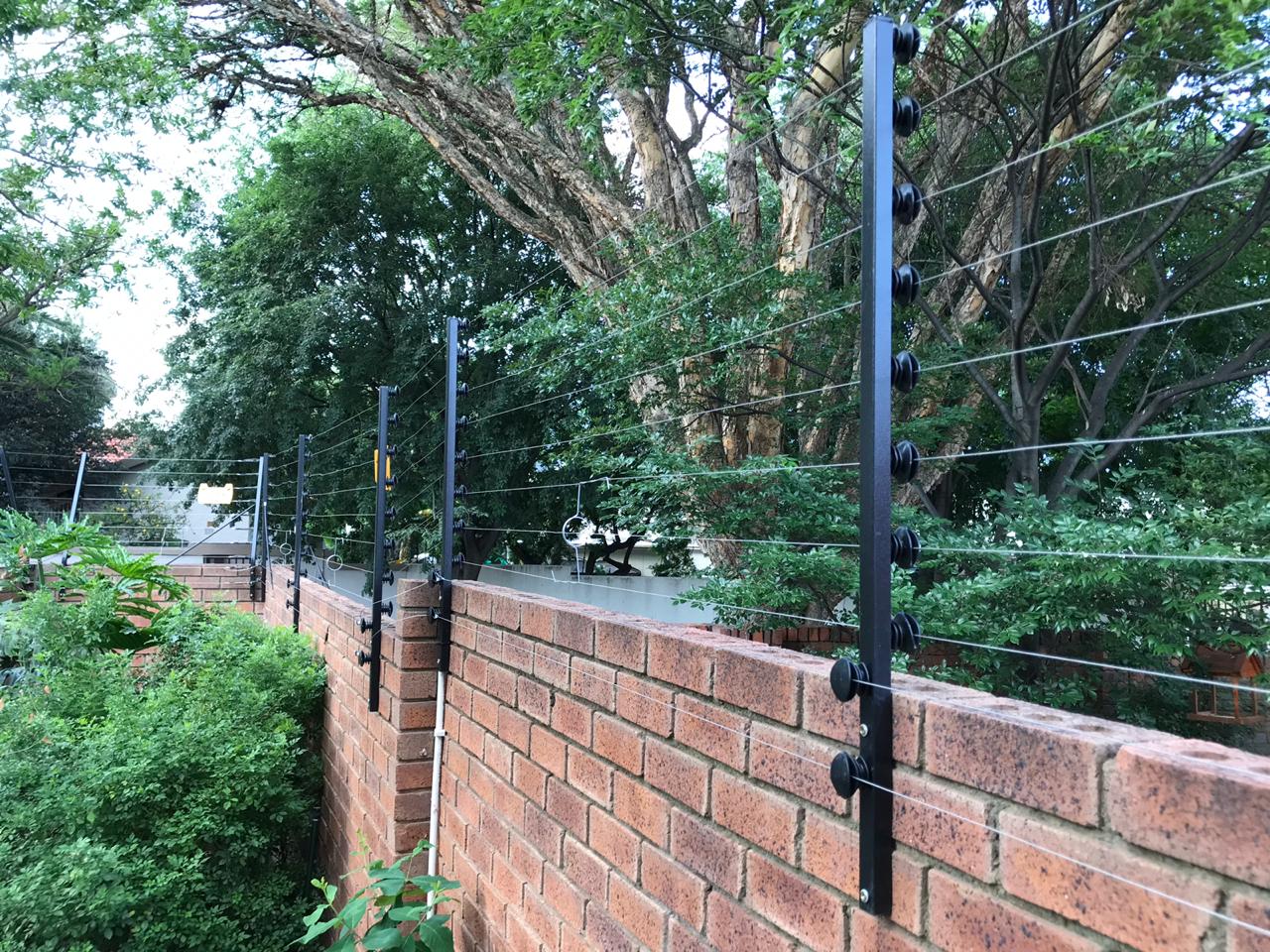
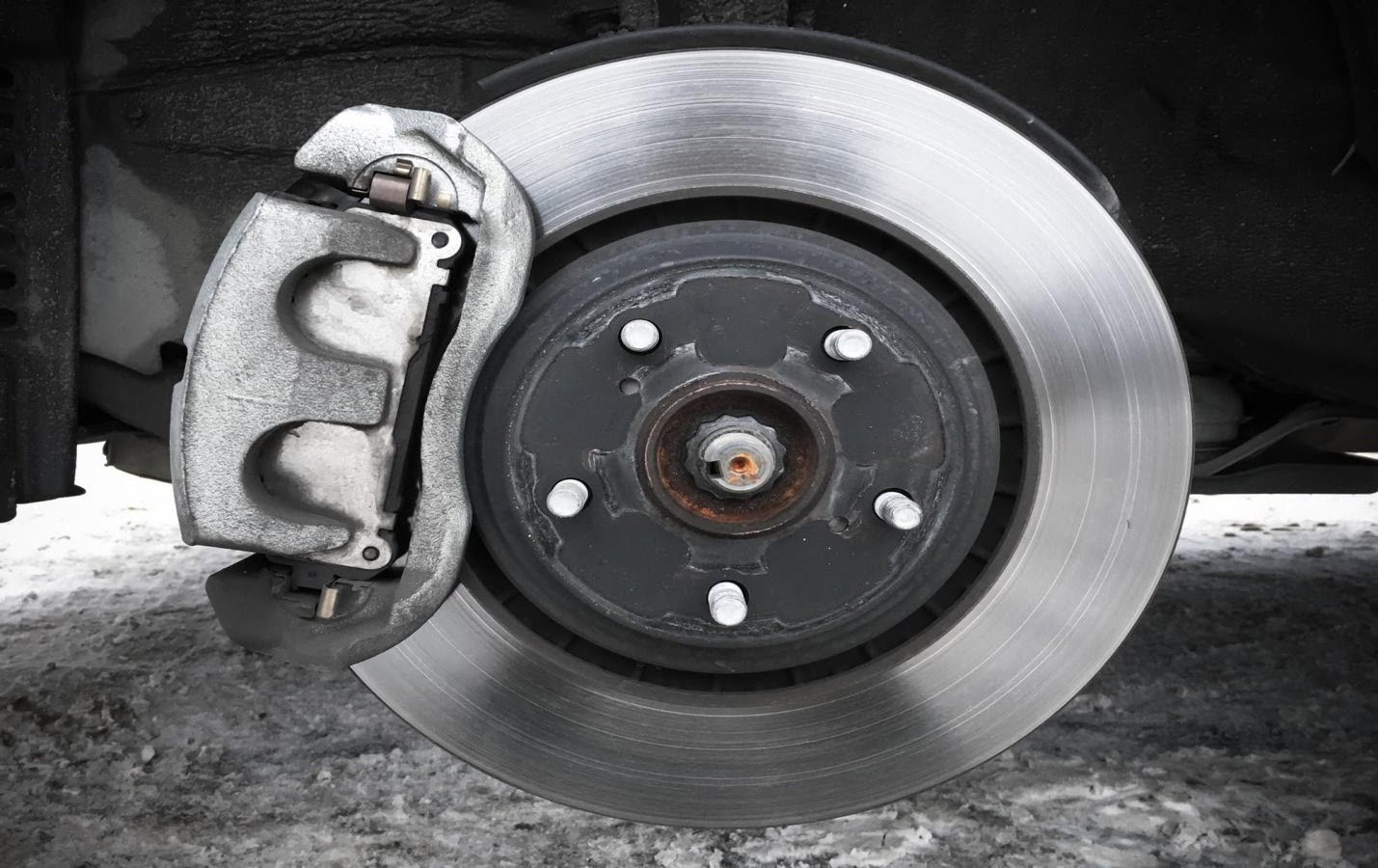



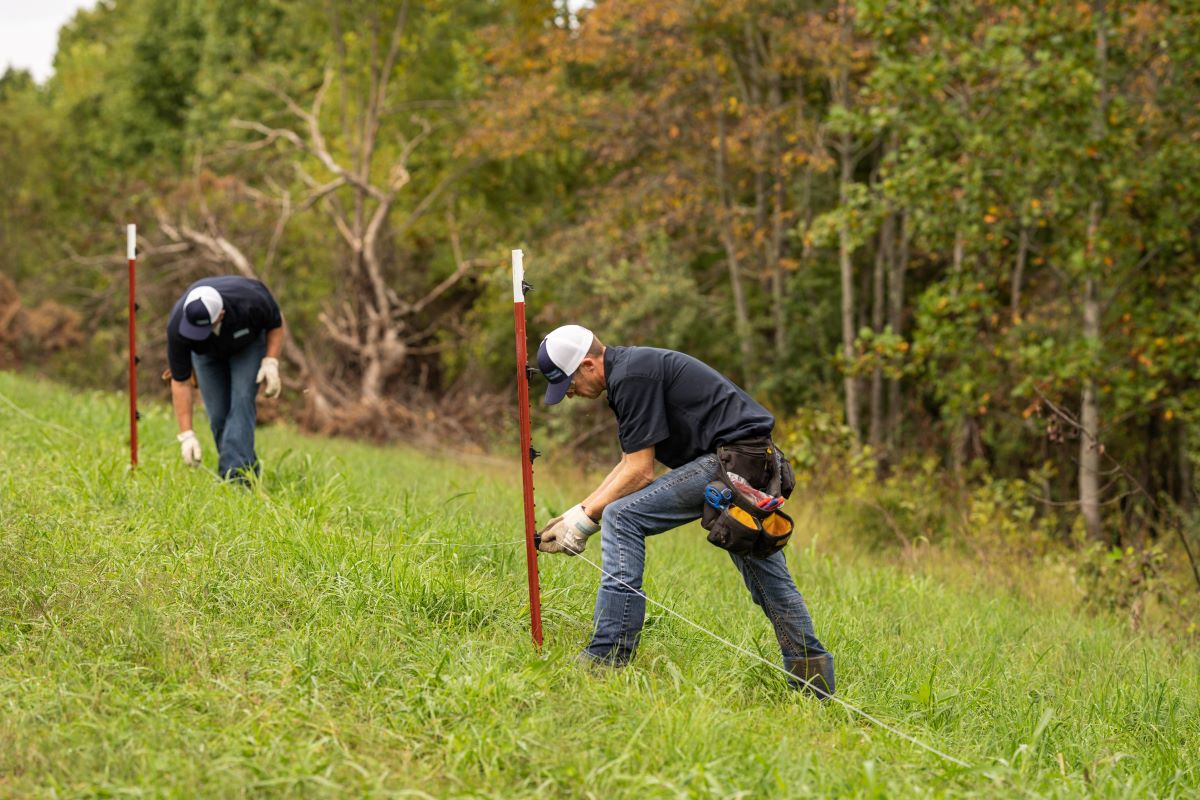
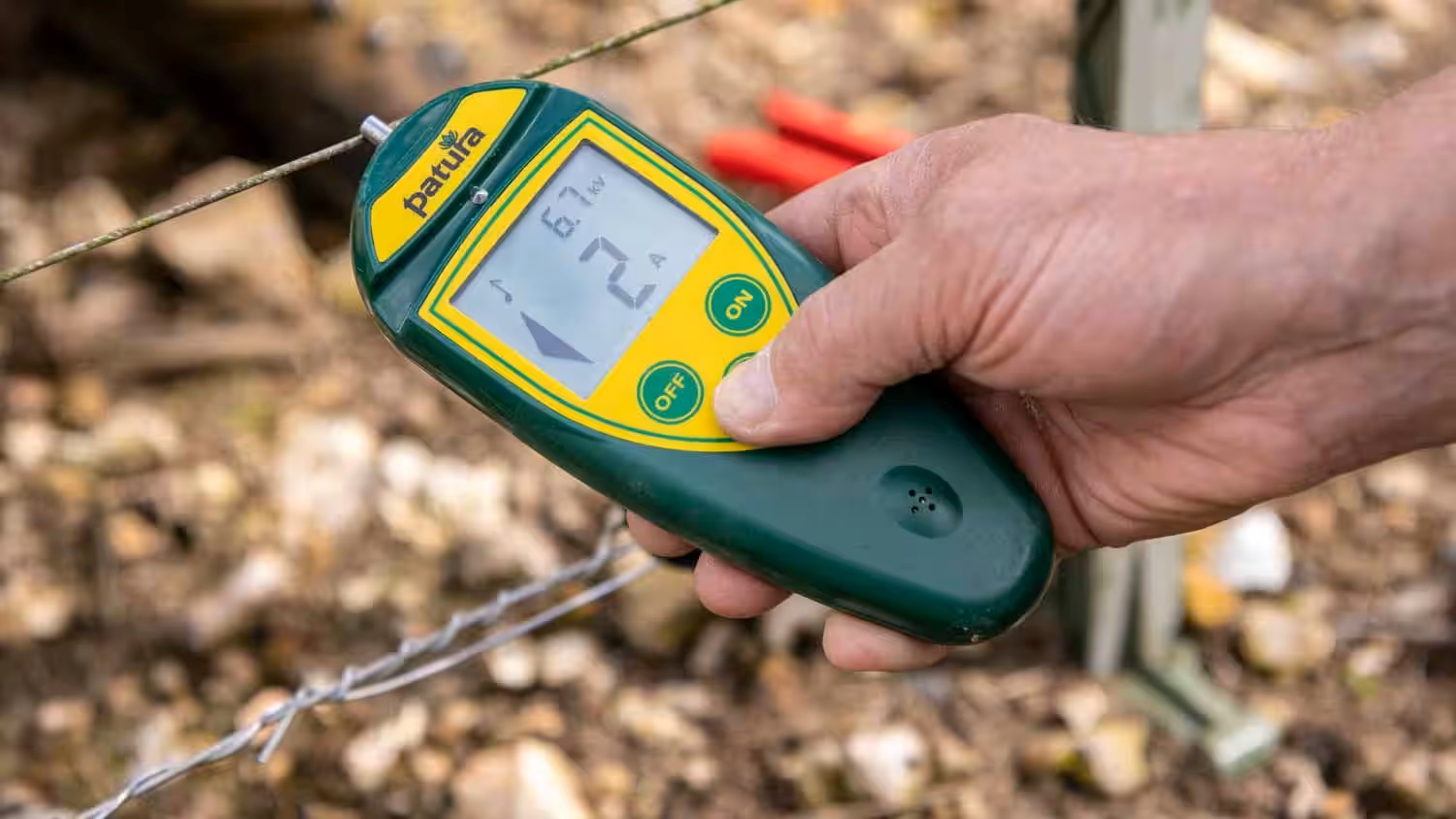
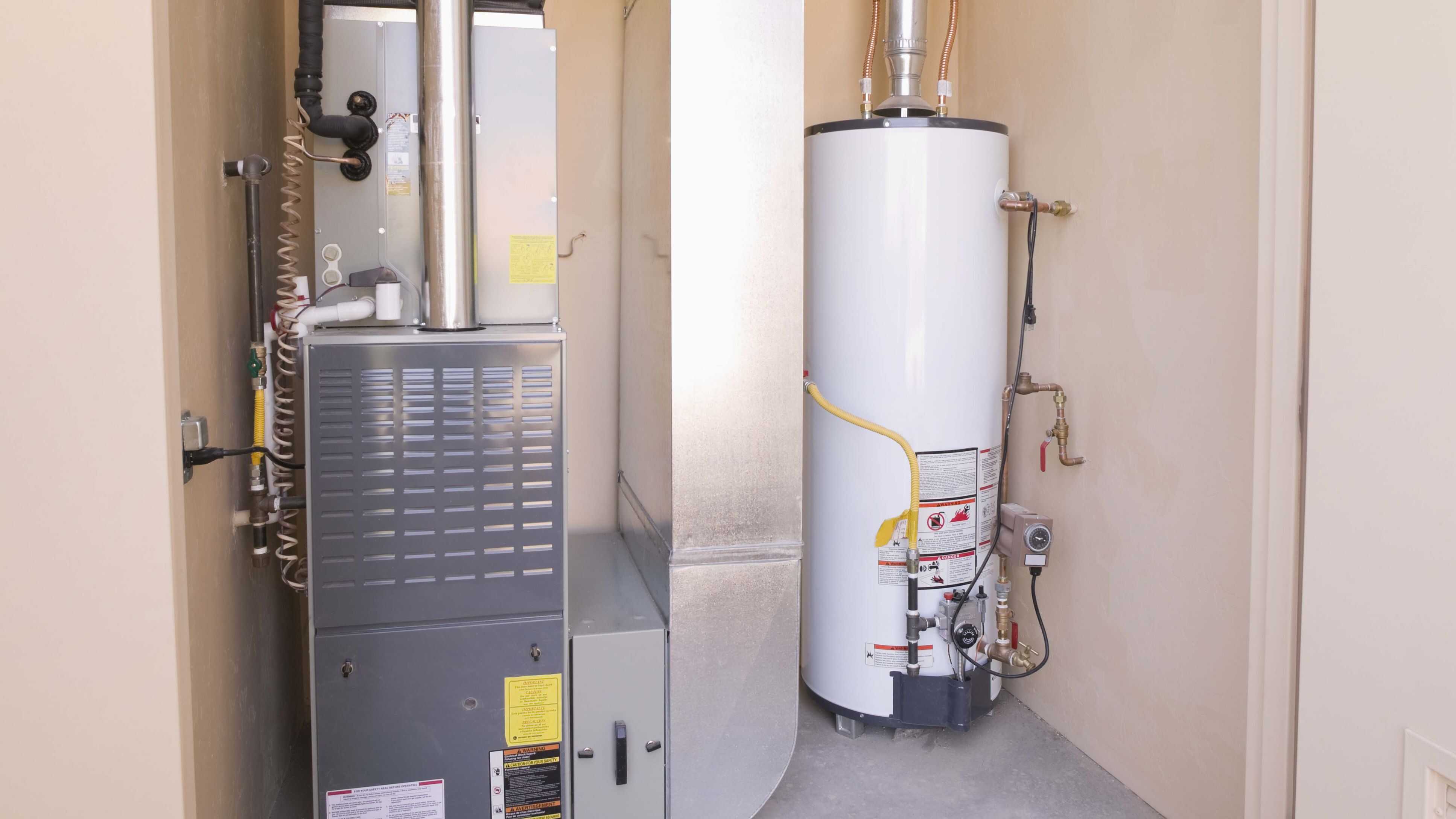
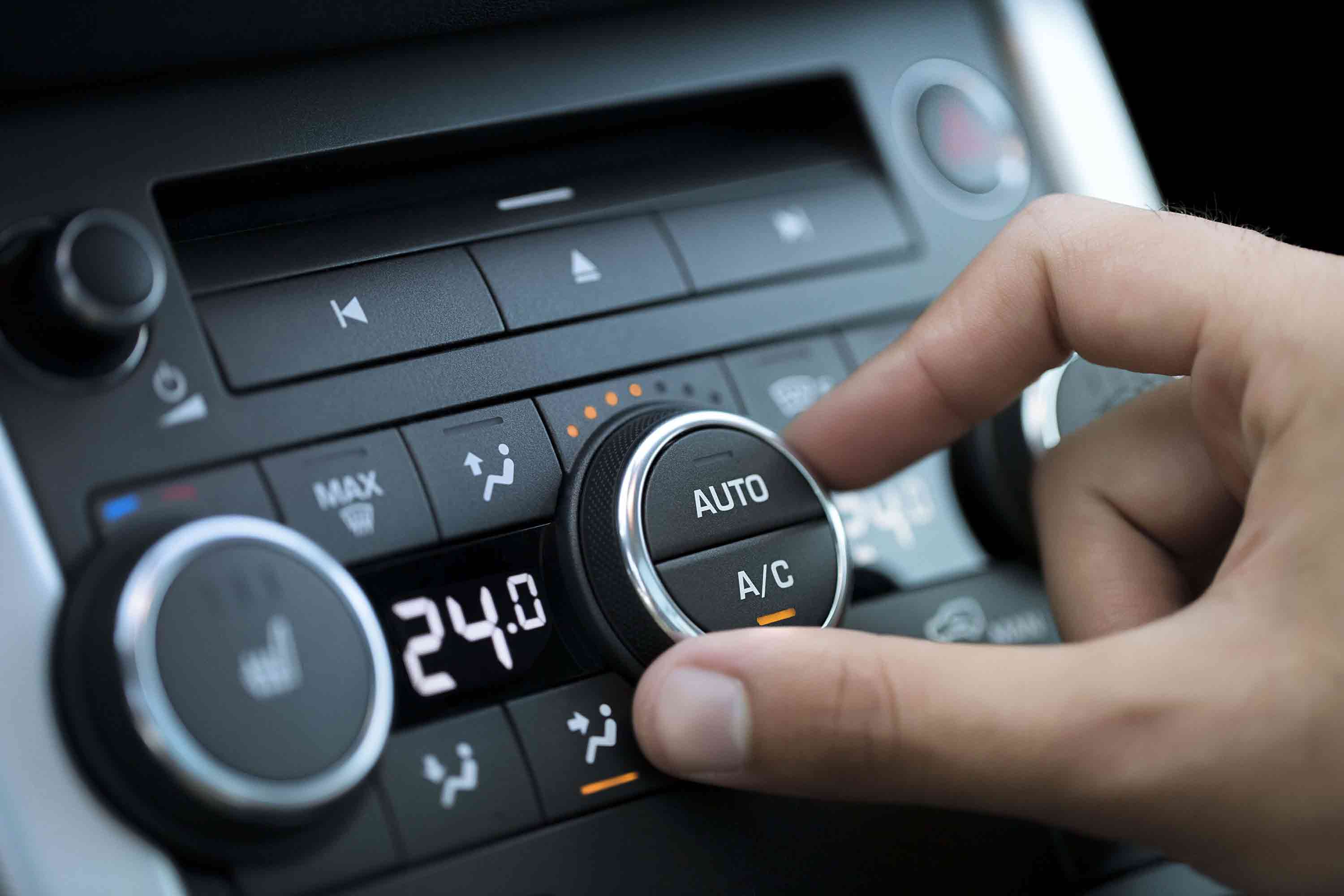

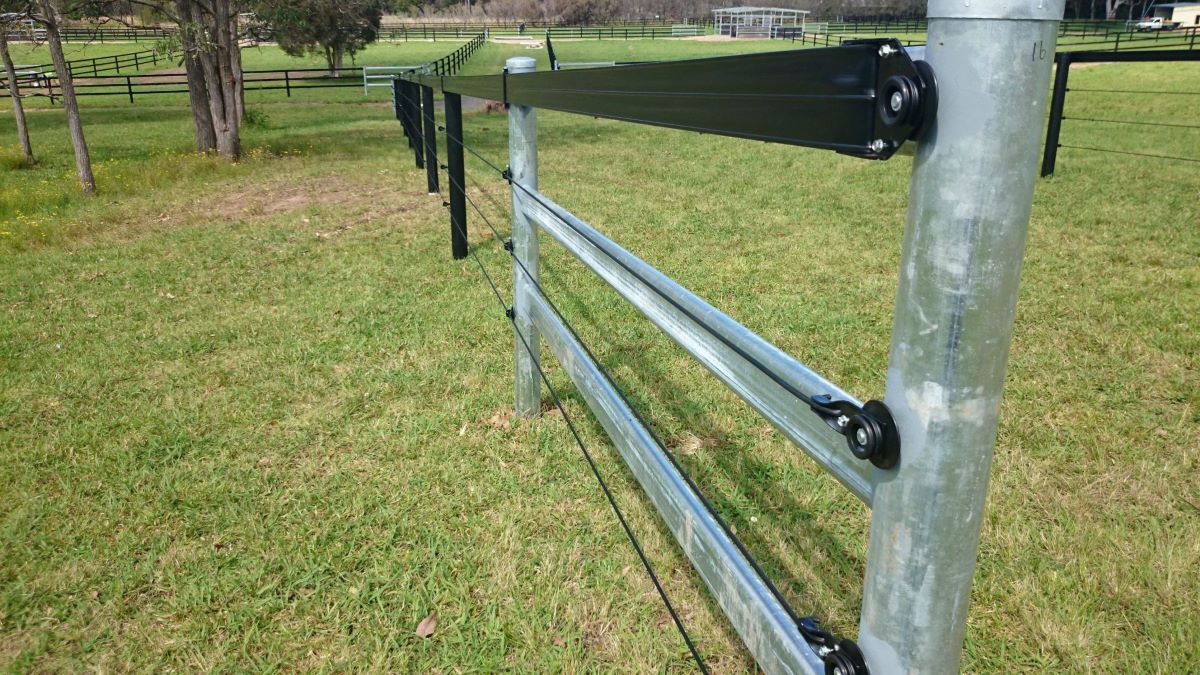
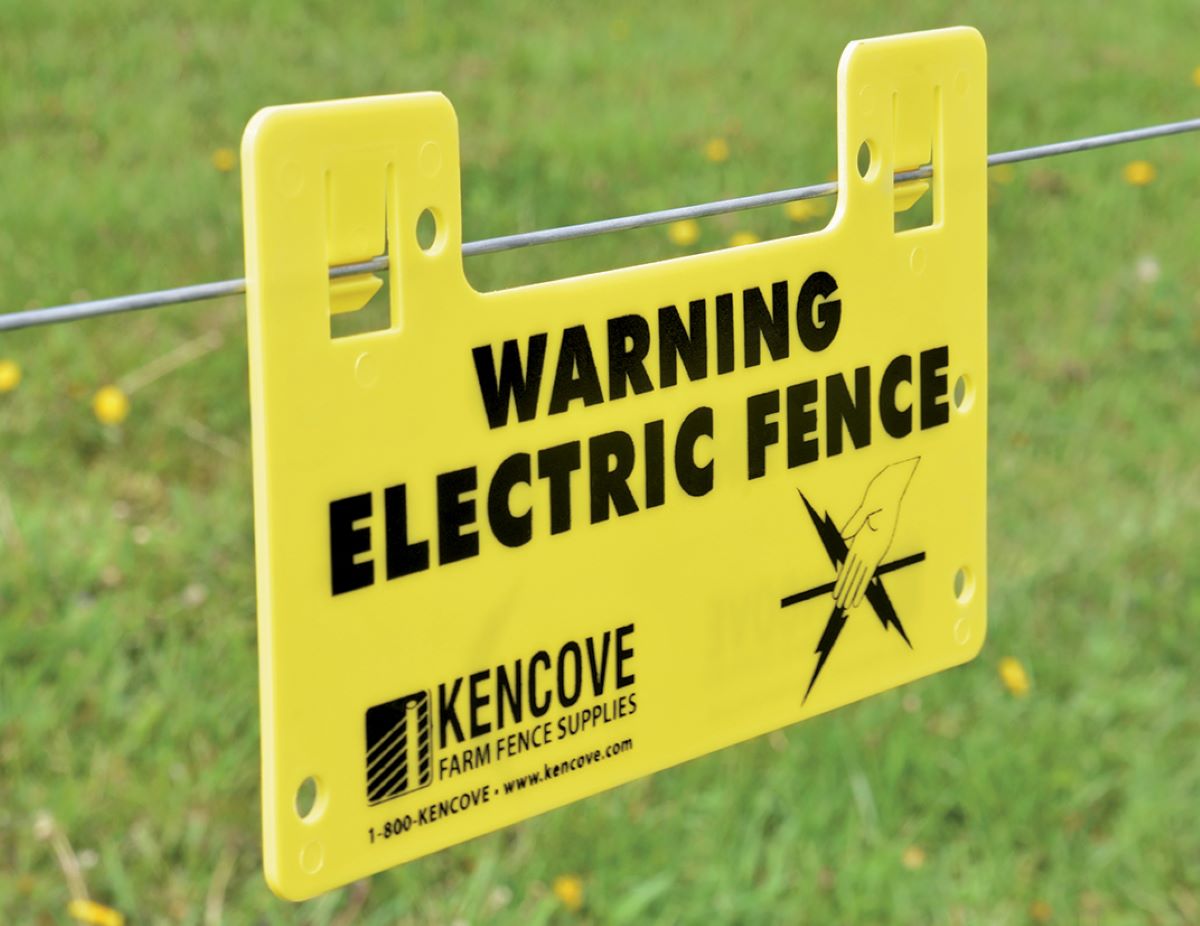

0 thoughts on “How Does Electric Fence Work”